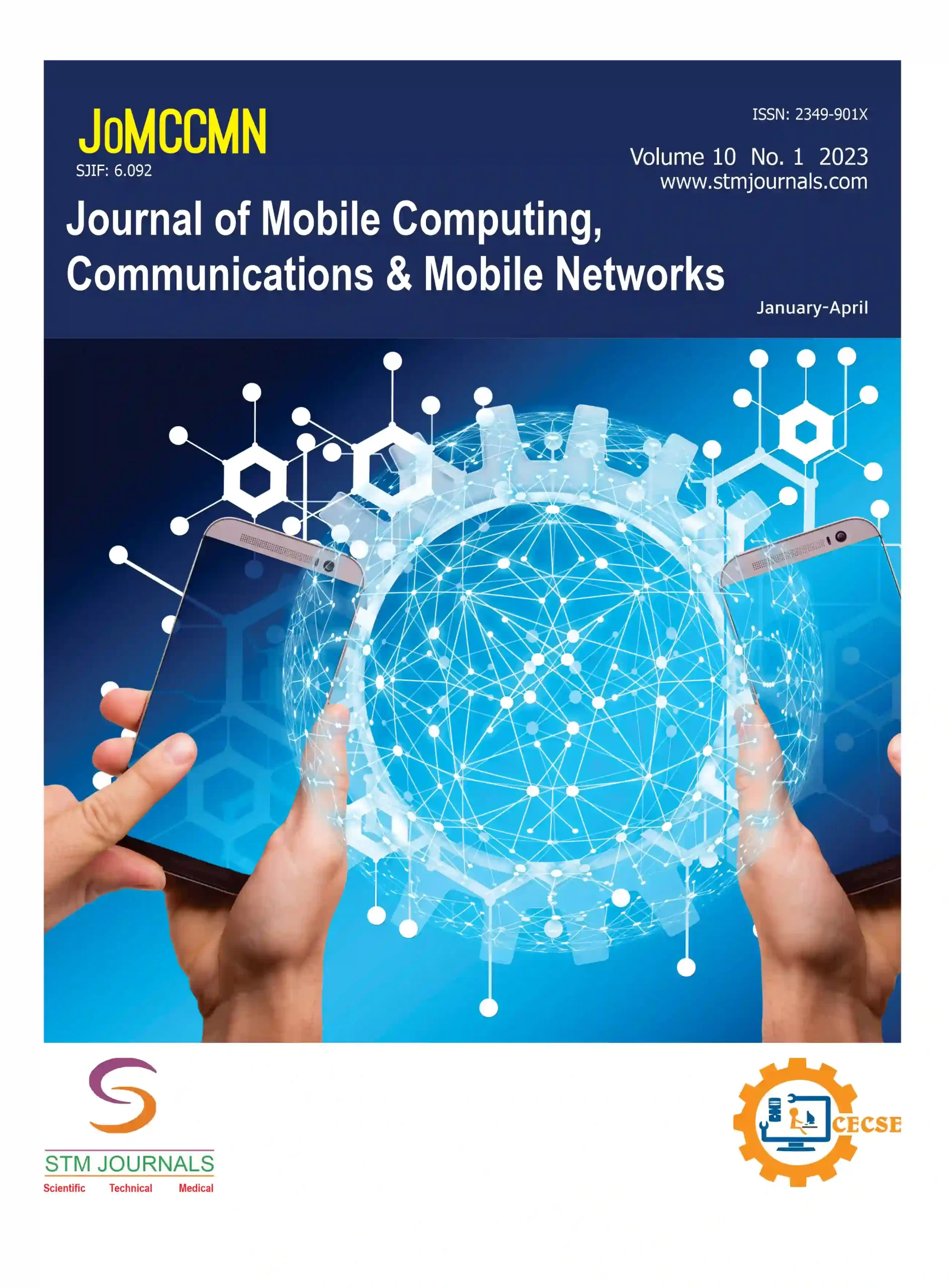
Prashant J. Viradiya1

Hirenkumar K. Mistry

Amit M. Goswami
- Research Scholar, Gyanmanjari Innovative University, Bhavnagar, Gujrat, India
- Research Scholar, Gyanmanjari Innovative University, Bhavnagar, Gujrat, India
- Research Scholar, Gyanmanjari Innovative University, Bhavnagar, Gujrat, India
Abstract
This think about looks at the impact of Computer Science (CS) and Soft Computing (SC) on a few scholarly disciplines and way of life. The consider points to improve calculation execution by utilizing computational intelligence (CI) techniques, progressing the steadiness of statistical classification (SC) models, and optimizing them through algorithmic upgrades. These adjustments encourage the method of altering, selecting, and creating oneself, indeed in challenging circumstances. The effect on work, protection, social elements, and decision-making illustrates its transformative capabilities. Whereas recognizing the inadequacies and moral contemplations, the consider emphasizes the energetic nature of these spaces. The report shows some curiously thoughts that will offer assistance make future hones in SC and CI better. In expansion, it gives a brief outline of why solid inventiveness is imperative.
Keywords: Soft Computing, Computation Intelligence, Decision Making, Social interaction, Artificial Intelligence.
[This article belongs to Journal of Mobile Computing, Communications & Mobile Networks(jomccmn)]
var fieldValue = “[user_role]”;
if (fieldValue == ‘indexingbodies’) {
document.write(‘Full Text PDF‘);
}
else if (fieldValue == ‘administrator’) { document.write(‘Full Text PDF‘); }
else if (fieldValue == ‘jomccmn’) { document.write(‘Full Text PDF‘); }
else { document.write(‘ ‘); }
References
1. Zhang, X., Nguyen, H., Bui, X.N., Tran, Q.H., Nguyen, D.A., Bui, D.T. and Moayedi, H., 2020. Novel soft computing model for predicting blast-induced ground vibration in open-pit mines based on particle swarm optimization and XGBoost. Natural Resources Research, 29, pp.711–721.
2. Raja, M.A.Z., Mehmood, J., Sabir, Z., Nasab, A.K. and Manzar, M.A., 2019. Numerical solution of doubly singular nonlinear systems using neural networks-based integrated intelligent computing. Neural Computing and Applications, 31, pp.793–812.
3. Raj DJ. A comprehensive survey on the computational intelligence techniques and its applications. Journal of IoT in Social, Mobile, Analytics, and Cloud. 2019 Dec;1(3):147–59.
4. Shamshirband S, Fathi M, Chronopoulos AT, Montieri A, Palumbo F, Pescapè A. Computational intelligence intrusion detection techniques in mobile cloud computing environments: Review, taxonomy, and open research issues. Journal of Information Security and Applications. 2020 Dec 1;55:102582.
5. Gu X, Cao Z, Jolfaei A, Xu P, Wu D, Jung TP, Lin CT. EEG-based brain-computer interfaces (BCIs): A survey of recent studies on signal sensing technologies and computational intelligence approaches and their applications. IEEE/ACM transactions on computational biology and bioinformatics. 2021 Jan 19;18(5):1645–66.
6. Wang DH. Sustainable development and management in consumer electronics using soft computation. Journal of Soft Computing Paradigm. 2019 Sep;1(1):49–56.
7. Baroroh DK, Chu CH, Wang L. Systematic literature review on augmented reality in smart manufacturing: Collaboration between human and computational intelligence. Journal of Manufacturing Systems. 2021 Oct 1;61:696–711.
8. Iqbal R, Doctor F, More B, Mahmud S, Yousuf U. Big data analytics: Computational intelligence techniques and application areas. Technological Forecasting and Social Change. 2020 Apr 1;153:119253.
9. Ayon SI, Islam MM, Hossain MR. Coronary artery heart disease prediction: a comparative study of computational intelligence techniques. IETE Journal of Research. 2022 Jul 4;68(4):2488-507.
10. Zhou Z, Wang B, Guo Y, Zhang Y. Blockchain and computational intelligence inspired incentive- compatible demand response in internet of electric vehicles. IEEE Transactions on Emerging Topics in Computational Intelligence. 2019 May 23;3(3):205–16.
11. Umar M, Sabir Z, Raja MA. Intelligent computing for numerical treatment of nonlinear prey– predator models. Applied Soft Computing. 2019 Jul 1;80:506–24.
12. Sezer OB, Gudelek MU, Ozbayoglu AM. Financial time series forecasting with deep learning: A systematic literature review: 2005–2019. Applied soft computing. 2020 May 1;90:106181.
13. Nguyen, P.T., Ha, D.H., Avand, M., Jaafari, A., Nguyen, H.D., Al-Ansari, N., Van Phong, T., Sharma, R., Kumar, R., Le, H.V. and Ho, L.S., 2020. Soft computing ensemble models based on logistic regression for groundwater potential mapping. Applied Sciences, 10(7), p.2469.
14. Sathesh, D.A., 2019. Enhanced soft computing approaches for intrusion detection schemes in social media networks. Journal of Soft Computing Paradigm, 1(2), pp.69–79.
15. Al-Janabi, S., Mohammad, M. and Al-Sultan, A., 2020. A new method for prediction of air pollution based on intelligent computation. Soft Computing, 24(1), pp.661–680.
16. Kumar, A. and Jaiswal, A., 2020. Systematic literature review of sentiment analysis on Twitter using soft computing techniques. Concurrency and Computation: Practice and Experience, 32(1), p.e5107.
17. Xia, F., Liu, J., Nie, H., Fu, Y., Wan, L. and Kong, X., 2019. Random walks: A review of algorithms and applications. IEEE Transactions on Emerging Topics in Computational Intelligence, 4(2), pp.95–107.

Journal of Mobile Computing, Communications & Mobile Networks
| Volume | 11 |
| Issue | 01 |
| Received | January 17, 2024 |
| Accepted | February 9, 2024 |
| Published | April 3, 2024 |
function myFunction2() {
var x = document.getElementById(“browsefigure”);
if (x.style.display === “block”) {
x.style.display = “none”;
}
else { x.style.display = “Block”; }
}
document.querySelector(“.prevBtn”).addEventListener(“click”, () => {
changeSlides(-1);
});
document.querySelector(“.nextBtn”).addEventListener(“click”, () => {
changeSlides(1);
});
var slideIndex = 1;
showSlides(slideIndex);
function changeSlides(n) {
showSlides((slideIndex += n));
}
function currentSlide(n) {
showSlides((slideIndex = n));
}
function showSlides(n) {
var i;
var slides = document.getElementsByClassName(“Slide”);
var dots = document.getElementsByClassName(“Navdot”);
if (n > slides.length) { slideIndex = 1; }
if (n (item.style.display = “none”));
Array.from(dots).forEach(
item => (item.className = item.className.replace(” selected”, “”))
);
slides[slideIndex – 1].style.display = “block”;
dots[slideIndex – 1].className += ” selected”;
}

